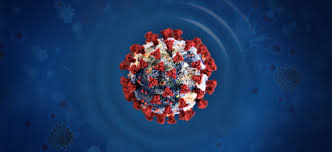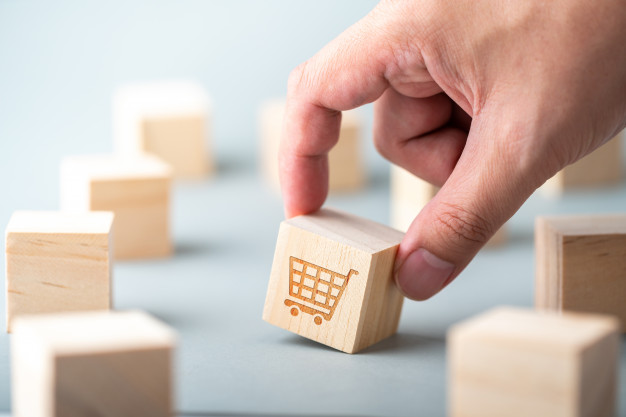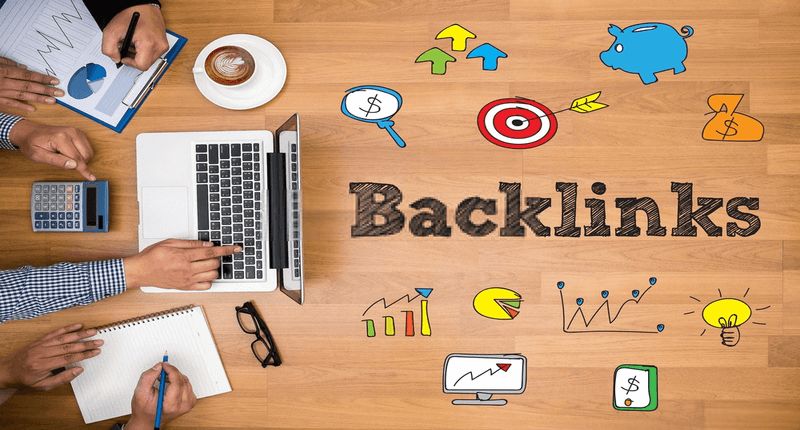
COVID-19 Coronavirus - FAQs
Coronavirus Disease Basics
On February 11, 2020 the World Health Organization
announced an official name for the disease that is causing the 2019 novel
coronavirus outbreak, first identified in Wuhan China. The new name of this
disease is coronavirus disease 2019, abbreviated as COVID-19. In COVID-19, ‘CO’
stands for ‘corona,’ ‘VI’ for ‘virus,’ and ‘D’ for disease. Formerly, this disease
was referred to as “2019 novel coronavirus” or “2019-nCoV”.
A novel coronavirus is a new coronavirus that has not been previously identified. The virus causing coronavirus disease 2019 (COVID-19), is not the same as the coronaviruses that commonly circulate among humans and cause mild illness, like the common cold.
Why is the disease being called coronavirus disease 2019, COVID-19?
On February 11, 2020 the World Health Organization
announced an official name for the disease that is causing the 2019 novel
coronavirus outbreak, first identified in Wuhan China. The new name of this
disease is coronavirus disease 2019, abbreviated as COVID-19. In COVID-19, ‘CO’
stands for ‘corona,’ ‘VI’ for ‘virus,’ and ‘D’ for disease. Formerly, this
disease was referred to as “2019 novel coronavirus” or “2019-nCoV”.
There are many types of
human coronaviruses including some that commonly cause mild upper-respiratory
tract illnesses. COVID-19 is a new disease, caused be a novel (or new)
coronavirus that has not previously been seen in humans. The name of this
disease was selected following the World Health Organization (WHO) best
practice external icon for naming of new human infectious diseases.
How can people help stop stigma related to COVID-19?
People can fight stigma and help, not hurt, others by providing social support. Counter stigma by learning and sharing facts. Communicating the facts that viruses do not target specific racial or ethnic groups and how COVID-19 actually spreads can help stop stigma.
Why might someone blame or avoid individuals and groups?
People in the U.S. may be worried or anxious about
friends and relatives who are living in or visiting areas where COVID-19 is
spreading. Some people are worried about the disease. Fear and anxiety can lead
to social stigma, for example, towards Chinese or other Asian Americans or
people who were in quarantine.
Stigma is discrimination against an identifiable group of
people, a place, or a nation. Stigma is associated with a lack of knowledge
about how COVID-19 spreads, a need to blame someone, fears about disease and
death, and gossip that spreads rumors and myths.
Stigma hurts everyone by creating more fear
or anger towards ordinary people instead of the disease that is causing the
problem.
How It Spreds
What is the source of the virus?
Coronaviruses are a large family of viruses.
Some cause illness in people, and others, such as canine and feline
coronaviruses, only infect animals. Rarely, animal coronaviruses that infect
animals have emerged to infect people and can spread between people. This is
suspected to have occurred for the virus that causes COVID-19. Middle East
Respiratory Syndrome (MERS) and Severe Acute Respiratory Syndrome (SARS) are
two other examples of coronaviruses that originated from animals and then
spread to people. More information about the source and spread of COVID-19 is
available on the Situation
Summary: Source and Spread of the Virus.
This virus was first detected in Wuhan City, Hubei
Province, China. The first infections were linked to a live animal market, but
the virus is now spreading from person-to-person. It’s important to note that
person-to-person spread can happen on a continuum. Some viruses are highly
contagious (like measles), while other viruses are less so.
The virus that causes COVID-19 seems to be spreading easily and sustainably in the community (“community spread”) in some affected geographic areas. Community spread means people have been infected with the virus in an area, including some who are not sure how or where they became infected.
Can someone who has had COVID-19 spread the illness to others?
The virus that causes COVID-19 is spreading
from person-to-person. Someone who
is actively sick with COVID-19 can spread the illness to others. That is why
CDC recommends that these patients be isolated either in the hospital or at
home (depending on how sick they are) until they are better and no longer pose
a risk of infecting others.
How long someone is actively sick can vary so the
decision on when to release someone from isolation is made on a case-by-case
basis in consultation with doctors, infection prevention and control experts,
and public health officials and involves considering specifics of each
situation including disease severity, illness signs and symptoms, and results
of laboratory testing for that patient.
Current CDC
guidance for when it is OK to release someone from isolation is
made on a case by case basis and includes meeting all of the following
requirements:
·
The patient is free from fever without the
use of fever-reducing medications.
·
The patient is no longer showing symptoms,
including cough.
·
The patient has tested negative on at least
two consecutive respiratory specimens collected at least 24 hours apart.
Someone who has been released from isolation is not considered to pose a risk of infection to others.
Will warm weather stop the outbreak of COVID-19?
It is not yet known whether weather and temperature impact the spread of COVID-19. Some other viruses, like the common cold and flu, spread more during cold weather months but that does not mean it is impossible to become sick with these viruses during other months. At this time, it is not known whether the spread of COVID-19 will decrease when weather becomes warmer. There is much more to learn about the transmissibility, severity, and other features associated with COVID-19 and investigations are ongoing.
Can the virus that causes COVID-19 be spread through food, including
refrigerated or frozen food?
Coronaviruses are generally thought to be spread from
person-to-person through respiratory droplets. Currently there is no evidence
to support transmission of COVID-19 associated with food. Before preparing or
eating food it is important to always wash your hands with soap and water for
20 seconds for general food safety. Throughout the day wash your hands after
blowing your nose, coughing or sneezing, or going to the bathroom.
It may be possible that a person can get COVID-19 by touching
a surface or object that has the virus on it and then touching their own mouth,
nose, or possibly their eyes, but this is not thought to be the main way the
virus spreads.
In general, because of poor survivability of these
coronaviruses on surfaces, there is likely very low risk of spread from food
products or packaging that are shipped over a period of days or weeks at
ambient, refrigerated, or frozen temperatures.
Community spread means people have been
infected with the virus in an area, including some who are not sure how or
where they became infected.
How to Protect Yourself
Protection measures for everyone
Stay aware of the latest information on the COVID-19
outbreak, available on the WHO website and through your national and local
public health authority. Many countries around the world have seen cases of
COVID-19 and several have seen outbreaks. Authorities in China and some other
countries have succeeded in slowing or stopping their outbreaks. However, the
situation is unpredictable so check regularly for the latest news.
You can reduce your chances of being infected or
spreading COVID-19 by taking some simple precautions:
·
Regularly and thoroughly clean your hands
with an alcohol-based hand rub or wash them with soap and water.
Why? Washing your hands with soap and water or using alcohol-based hand
rub kills viruses that may be on your hands.
·
Maintain at least 1 metre (3 feet) distance
between yourself and anyone who is coughing or sneezing.
Why? When someone coughs or sneezes they spray small liquid droplets from
their nose or mouth which may contain virus. If you are too close, you can
breathe in the droplets, including the COVID-19 virus if the person coughing
has the disease.
·
Avoid touching eyes, nose and mouth.
Why? Hands touch many surfaces and can pick up viruses. Once contaminated,
hands can transfer the virus to your eyes, nose or mouth. From there, the virus
can enter your body and can make you sick.
·
Make sure you, and the people around you,
follow good respiratory hygiene. This means covering your mouth and nose with
your bent elbow or tissue when you cough or sneeze. Then dispose of the used
tissue immediately.
Why? Droplets spread virus. By following good respiratory hygiene you
protect the people around you from viruses such as cold, flu and COVID-19.
·
Stay home if you feel unwell. If you have a
fever, cough and difficulty breathing, seek medical attention and call in
advance. Follow the directions of your local health authority.
Why? National and local authorities will have the most up to date
information on the situation in your area. Calling in advance will allow your
health care provider to quickly direct you to the right health facility. This
will also protect you and help prevent spread of viruses and other infections.
·
Keep up to date on the latest COVID-19 hotspots
(cities or local areas where COVID-19 is spreading widely). If possible, avoid
traveling to places – especially if you are an older person or have diabetes,
heart or lung disease.
Why? You have a higher chance of catching COVID-19 in one of these areas.
What should I do if I had close contact with someone who has COVID-19?
Household members, intimate partners, and caregivers in a
nonhealthcare setting may have close contact2 with a person with symptomatic,
laboratory-confirmed COVID-19 or a person under investigation. Close contacts
should monitor their health; they should call their healthcare provider right
away if they develop symptoms suggestive of COVID-19 (e.g., fever, cough,
shortness of breath)
Close contacts should also follow these recommendations:
·
Make sure that you understand and can help
the patient follow their healthcare provider’s instructions for medication(s)
and care. You should help the patient with basic needs in the home and provide
support for getting groceries, prescriptions, and other personal needs.
·
Monitor the patient’s symptoms. If the
patient is getting sicker, call his or her healthcare provider and tell them
that the patient has laboratory-confirmed COVID-19. This will help the
healthcare provider’s office take steps to keep other people in the office or
waiting room from getting infected. Ask the healthcare provider to call the
local or state health department for additional guidance. If the patient has a
medical emergency and you need to call 911, notify the dispatch personnel that
the patient has, or is being evaluated for COVID-19.
·
Household members should stay in another room
or be separated from the patient as much as possible. Household members should
use a separate bedroom and bathroom, if available.
·
Prohibit visitors who do not have an
essential need to be in the home.
·
Household members should care for any pets in
the home. Do not handle pets or other animals while sick. For more
information
·
Make sure that shared spaces in the home have
good air flow, such as by an air conditioner or an opened window, weather
permitting.
·
Perform hand hygiene frequently. Wash your
hands often with soap and water for at least 20 seconds or use an alcohol-based
hand sanitizer that contains 60 to 95% alcohol, covering all surfaces of your
hands and rubbing them together until they feel dry. Soap and water should be
used preferentially if hands are visibly dirty.
·
Avoid touching your eyes, nose, and mouth
with unwashed hands.
·
The patient should wear a facemask when you
are around other people. If the patient is not able to wear a facemask (for
example, because it causes trouble breathing), you, as the caregiver, should
wear a mask when you are in the same room as the patient.
·
Wear a disposable facemask and gloves when
you touch or have contact with the patient’s blood, stool, or body fluids, such
as saliva, sputum, nasal mucus, vomit, urine.
o
Throw out disposable facemasks and gloves after
using them. Do not reuse.
o
When removing personal protective equipment,
first remove and dispose of gloves. Then, immediately clean your hands with
soap and water or alcohol-based hand sanitizer. Next, remove and dispose of
facemask, and immediately clean your hands again with soap and water or
alcohol-based hand sanitizer.
·
Avoid sharing household items with the
patient. You should not share dishes, drinking glasses, cups, eating utensils,
towels, bedding, or other items. After the patient uses these items, you should
wash them thoroughly (see below “Wash laundry thoroughly”).
·
Clean all “high-touch” surfaces, such as
counters, tabletops, doorknobs, bathroom fixtures, toilets, phones, keyboards,
tablets, and bedside tables, every day. Also, clean any surfaces that may have
blood, stool, or body fluids on them.
o
Use a household cleaning spray or wipe,
according to the label instructions. Labels contain instructions for safe and
effective use of the cleaning product including precautions you should take
when applying the product, such as wearing gloves and making sure you have good
ventilation during use of the product.
·
Wash laundry thoroughly.
o
Immediately remove and wash clothes or
bedding that have blood, stool, or body fluids on them.
o
Wear disposable gloves while handling soiled
items and keep soiled items away from your body. Clean your hands (with soap
and water or an alcohol-based hand sanitizer) immediately after removing your
gloves.
o
Read and follow directions on labels of
laundry or clothing items and detergent. In general, using a normal laundry
detergent according to washing machine instructions and dry thoroughly using
the warmest temperatures recommended on the clothing label.
·
Place all used disposable gloves, facemasks,
and other contaminated items in a lined container before disposing of them with
other household waste. Clean your hands (with soap and water or an
alcohol-based hand sanitizer) immediately after handling these items. Soap and
water should be used preferentially if hands are visibly dirty.
·
Discuss any additional questions with your
state or local health department or healthcare provider. Check available hours
when contacting your local health department.
Who is at higher risk for serious illness from COVID-19?
Older adults and people of any age who have serious
underlying medical conditions may be at higher risk for more serious
complications from COVID-19. These people who may be at higher risk of getting
very sick from this illness, includes:
·
Older adults
·
People who have serious underlying medical
conditions like:
o
Heart disease
o
Diabetes
o
Lung disease
What should people at higher risk of serious illness with COVID-19 do?
If you are at higher risk of getting very
sick from COVID-19, you should: stock up on supplies; take everyday precautions
to keep space between yourself and others; when you go out in public, keep away
from others who are sick; limit close contact and wash your hands often; and
avoid crowds, cruise travel, and non-essential travel. If there is an outbreak
in your community, stay home as much as possible. Watch for symptoms and
emergency signs. If you get sick, stay home and call your doctor. More
information on how to prepare, what to do if you get sick, and how communities
and caregivers can support those at higher risk is available on People
at Risk for Serious Illness from COVID-19.
Should I wear a mask to protect myself?
Only wear a mask if you are ill with COVID-19 symptoms
(especially coughing) or looking after someone who may have COVID-19.
Disposable face mask can only be used once. If you are not ill or looking after
someone who is ill then you are wasting a mask. There is a world-wide shortage
of masks, so WHO urges people to use masks wisely.
WHO advises rational use of medical masks to avoid
unnecessary wastage of precious resources and mis-use of masks.
The most effective ways to protect yourself
and others against COVID-19 are to frequently clean your hands, cover your
cough with the bend of elbow or tissue and maintain a distance of at least 1
meter (3 feet) from people who are coughing or sneezing. See basic protective
measures against the new coronavirus for more information.
Symptoms & Testing
What are the symptoms of COVID-19?
The most common symptoms of COVID-19 are fever,
tiredness, and dry cough. Some patients may have aches and pains, nasal
congestion, runny nose, sore throat or diarrhea. These symptoms are usually
mild and begin gradually. Some people become infected but don’t develop any
symptoms and don't feel unwell. Most people (about 80%) recover from the
disease without needing special treatment. Around 1 out of every 6 people who
gets COVID-19 becomes seriously ill and develops difficulty breathing. Older
people, and those with underlying medical problems like high blood pressure,
heart problems or diabetes, are more likely to develop serious illness. People
with fever, cough and difficulty breathing should seek medical attention.
Should I be tested for COVID-19?
Not everyone needs to be tested for COVID-19.
For information about testing.
Where can I get tested for COVID-19?
The process and locations for testing vary
from place to place. Contact your state, local, tribal, or territorial
department for more information, or reach out to a medical provider. State and
local public health departments have received tests from CDC while medical
providers are getting tests developed by commercial manufacturers. While
supplies of these tests are increasing, it may still be difficult to find
someplace to get tested.
Can a person test negative and later test positive for COVID-19?
Using the CDC-developed diagnostic test, a negative
result means that the virus that causes COVID-19 was not found in the person’s
sample. In the early stages of infection, it is possible the virus will not be
detected.
For COVID-19, a negative test result for a
sample collected while a person has symptoms likely means that the COVID-19
virus is not causing their current illness.
Outbreak in Your Community
During an outbreak, stay calm and put your preparedness
plan to work. Follow the steps below:
- Stay home if you are sick. Keep away from
people who are sick. Limit close contact with others as much as possible
(about 6 feet).
Put your household plan into action.
- Stay informed about the local COVID-19
situation. Be aware of temporary school dismissals in your area, as this
may affect your household’s daily routine.
·
Continue practicing everyday preventive
actions. Cover coughs and sneezes with a tissue and wash your hands often
with soap and water for at least 20 seconds. If soap and water are not
available, use a hand sanitizer that contains 60% alcohol. Clean frequently
touched surfaces and objects daily using a regular household detergent and
water.
·
Notify your workplace as soon as possible if
your regular work schedule changes. Ask to work from home or take leave if
you or someone in your household gets sick with COVID-19
symptoms, or if your child’s school is dismissed
temporarily.
·
Stay in touch with others by phone or
email. If you have a chronic medical condition and live alone, ask family,
friends, and health care providers to check on you during an outbreak. Stay in
touch with family and friends, especially those at increased risk of developing
severe illness, such as older adults and people with severe chronic medical
conditions.




